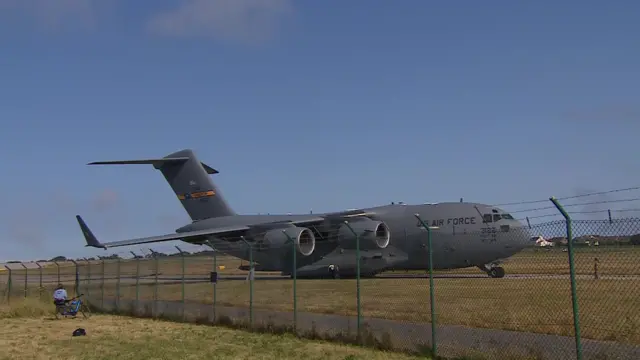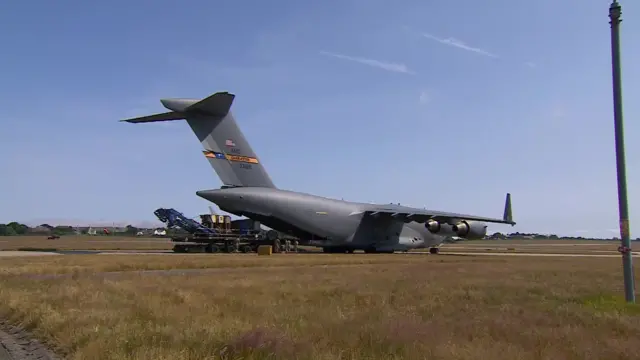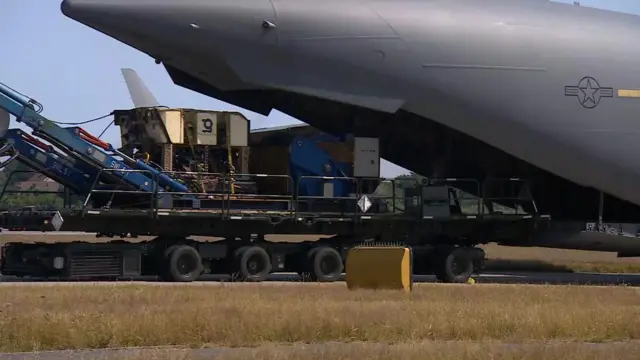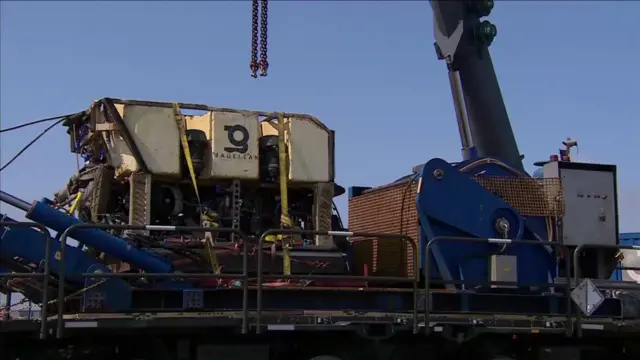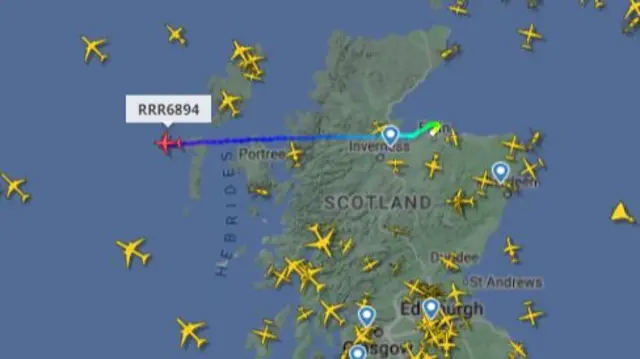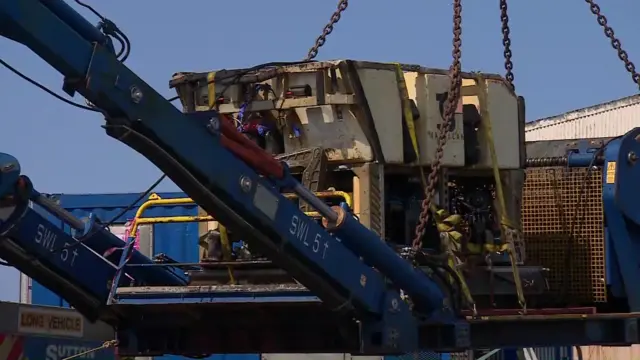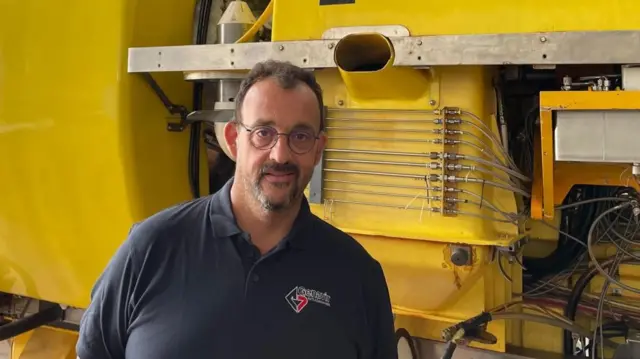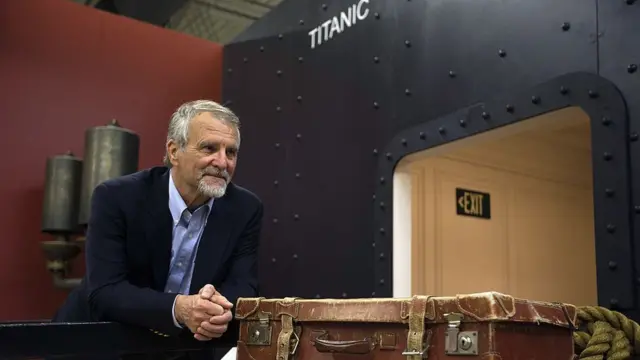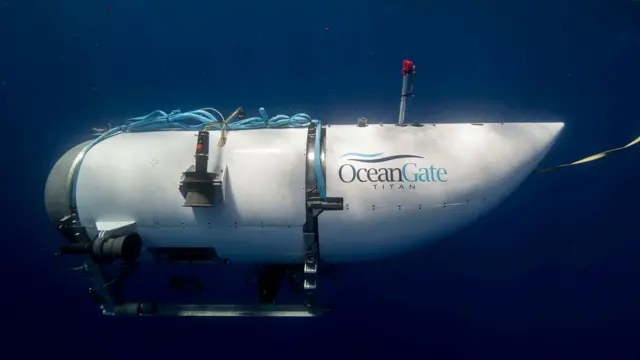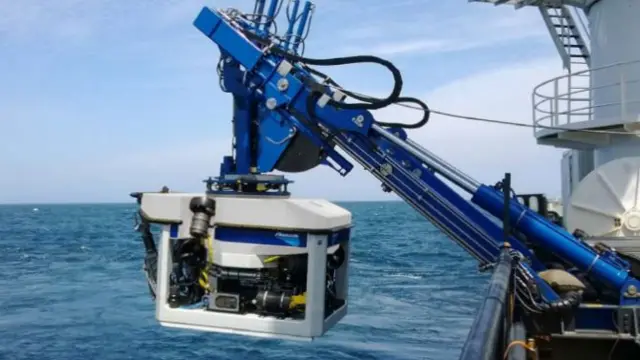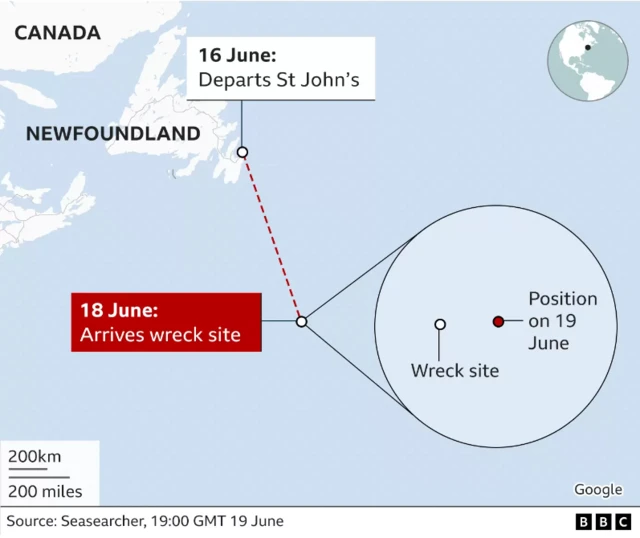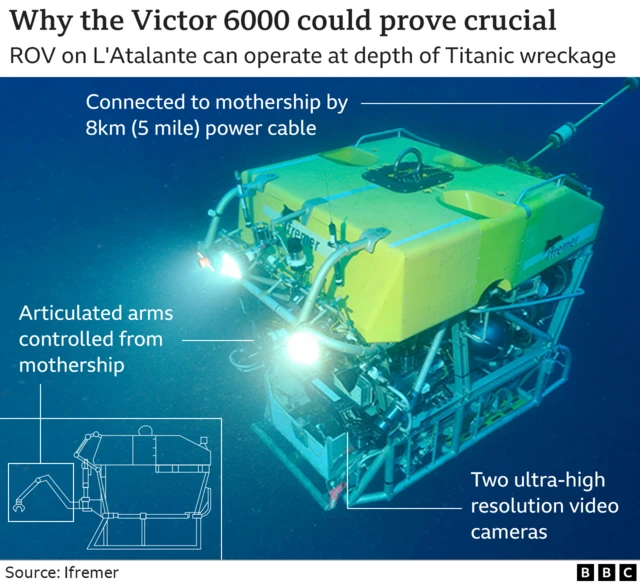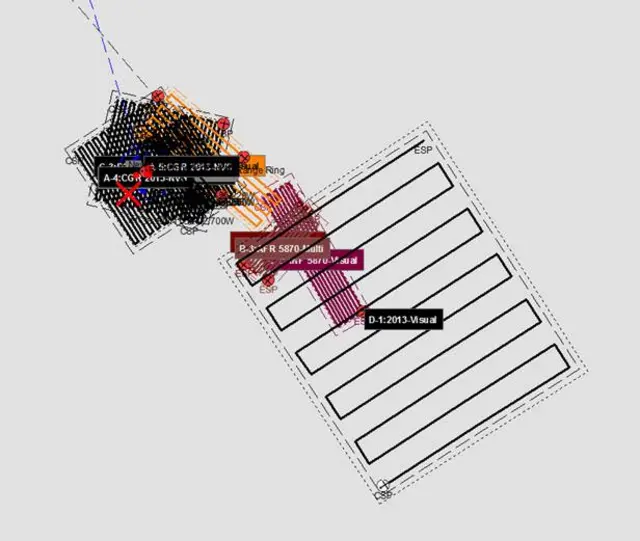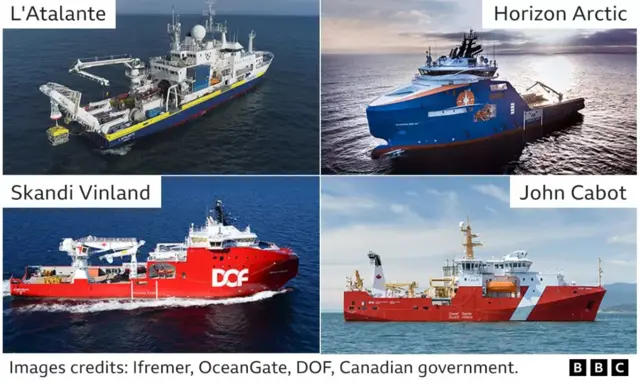Efforts to send deepwater survey craft from Jersey hits snagpublished at 15:54 BST 22 June 2023
In the past few hours two ROVs, remote operated vehicles, have descended to help in the search for the Titan.
However, efforts to fly out another ROV - called Juliet - belonging to the Guernsey-based deep-sea survey firm Magellan have hit a snag.
It was initially loaded late this morning onto a US military aircraft at Jersey Airport but they struggled to fully get it on, according to Magellan's chief executive Richard Parkinson. That means they now have to take if off and wait for another aircraft to arrive.
Here is what things looked like in Jersey as they prepared to transport the submersible.
